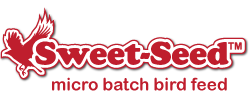Will Keeping Feeders Up Late in the Season Prevent Hummingbirds from Migrating?

It is always sad when hummingbirds start to migrate south and are around the yard less and less in late summer and fall. It is a common misconception, however, that leaving feeders up as days grow shorter and cooler will interfere with migration or even prevent hummingbirds from migrating altogether. In fact, late season hummingbird feeding can be the most productive, helpful and active time for hummingbirds in the yard, and you just might be missing out if you don't leave those feeders up a little while longer.
Why Hummingbirds Need Fall Feeders
As fall approaches, flowers fade and there is less reblooming late in the season just when hummingbirds need even more nectar. In late fall, juvenile hummingbirds have matured and there are more hummingbirds about, and they all need extra fuel for their migration journeys. The easy feeding from clean, full nectar feeders will give hummingbirds plenty of energy, not only for migration flights but also to survive the cooler nights and even early frosts and freezes. Migrating hummingbirds also enter a state of hyperphagia in late summer and fall, when their hormone levels change and they are driven to gain extra weight, increasing their body weight by as much as 25-40 percent. That extra fat will serve as fuel for their migration, and easy access to hummingbird feeders can ensure these tiny birds gain all the extra weight their wings can lift.
What Makes Hummingbirds Migrate
Many people mistakenly believe that abundant food, including feeders, will keep hummingbirds from migrating. In fact, food sources are only a very small part of what makes these birds start their long journeys. Instead, the timing of migration is instinctive, and hummingbirds know it is time to migrate by the amount of daylight each day, as well as the angle of the sun. Those factors are constant from year to year, and no matter how much food may be available, when it is time to migrate, hummingbirds will begin their long treks.
There are other factors that can influence the exact, day-to-day timing of migration. Local storms and weather patterns can delay migrating hummingbirds by a day or two. Hummingbirds that have greater distances to travel often migrate earlier than birds with shorter journeys. Mature, experienced hummingbirds usually migrate first, leaving immature birds that were hatched this year behind to continue maturing before they, too, begin migrating. Under no circumstances, however, will an extra feeder or two, or even ten, dramatically influence when hummingbirds migrate.
Feeding Hummingbirds During Fall Migration
Fall hummingbird feeding is a great way to help these birds prepare for and survive a perilous journey. To give fall hummers the best possible feeding…
- Keep Feeders Full and Clean Migrating hummingbirds may arrive at any time in the fall, even after resident hummingbirds have already moved on. A full, clean feeder will be more welcoming and useful for hungry hummingbirds, even if they are just passing through. Also be sure the feeding ports are in good repair, without any clogs that may thwart visiting birds, and without leaks that may waste critical nectar.
- Sweeten Nectar Slightly While the classic hummingbird nectar recipe of four parts water to one part sugar is suitable for feeding hummingbirds in any season, a very slightly sweeter mixture can be a favorite for fall hummingbirds. A sweeter mixture will provide more energy to migrating hummingbirds or any hummers still gaining weight for their journeys. On cold autumn evenings, a sweeter mixture will also stay more fluid, with less likelihood of freezing in a sudden frost. Do not make the nectar overly sweet, however, or the birds will not like it and it will clog feeding ports.
- Add Color to the Yard Hummingbirds won't visit your nectar feeders in fall if they don't know the feeders are there. Adding some extra bright colors to the yard will catch birds' attention, drawing them in to notice the feeders. A red gazing ball, garden bench, arbor and other decorations are great options, or plant autumn containers with brightly colored flowers and position them near feeding areas to catch hummingbirds' eyes.
- Change to Fall Feeders If your yard is very hummingbird-friendly, you may find your fall nectar feeders swarmed by a hungry migrating flock. Autumn is a good time to switch to larger capacity feeders with more feeding ports to accommodate extra birds without undue crowding. Position feeders in different parts of the yard to minimize any aggression, and more hummingbirds will be able to take advantage of your nectar generosity.
- Keep Nectar From Freezing As autumn nights get colder and freezes threaten, it is important to take steps to be sure that hummingbird nectar won't freeze. A string of miniature lights wrapped around the feeder's reservoir can keep the nectar liquid, or you may choose other ways to insulate the feeder from extreme cold. Bringing nectar feeders inside overnight can also be a good way to keep them from freezing, but they should be put out very early the next morning for the birds to refuel after a hungry night.
While keeping up nectar feeders in fall won't keep hummingbirds from migrating, that doesn't mean the feeders need to be kept up indefinitely. Once there have been no birds visiting for 10-14 days, it is safe to say that all the hummingbirds have moved further south, and the feeders can be taken down, cleaned and stored to be ready for next spring.
